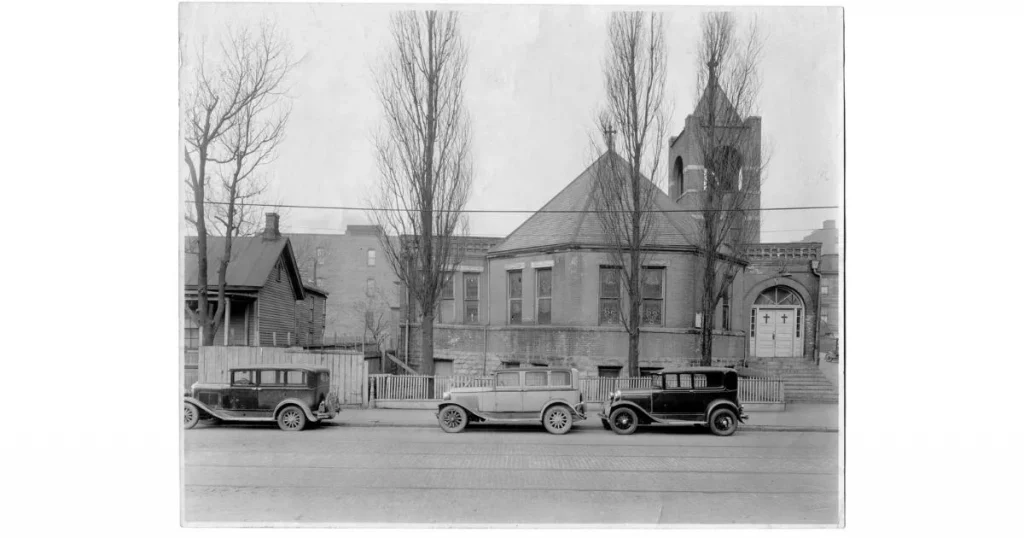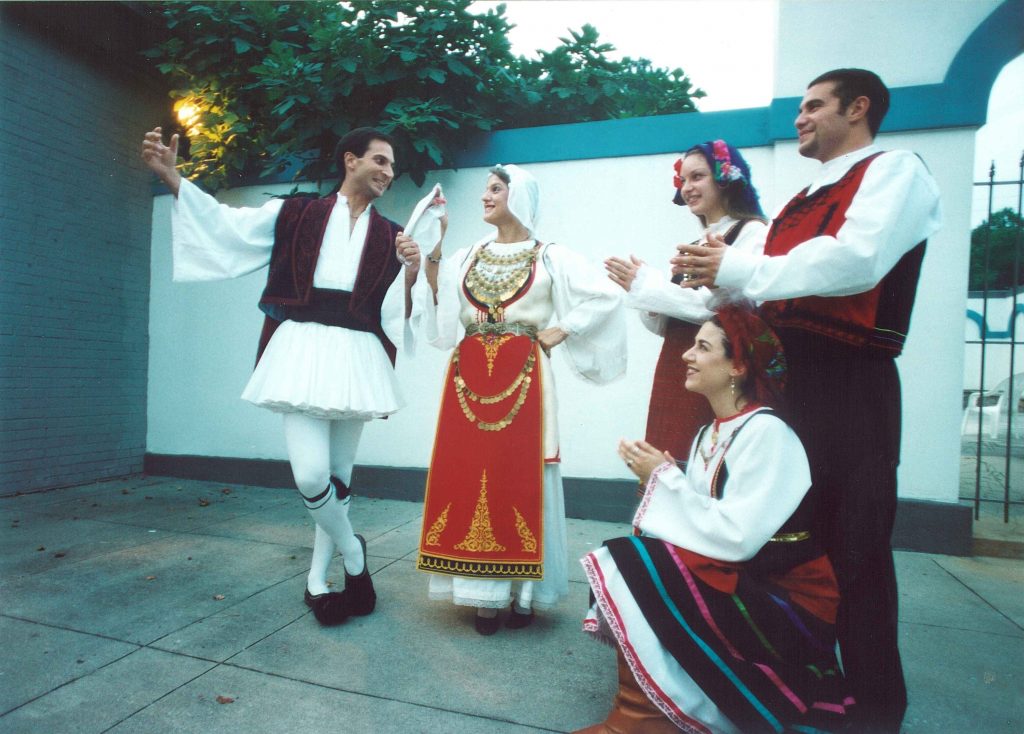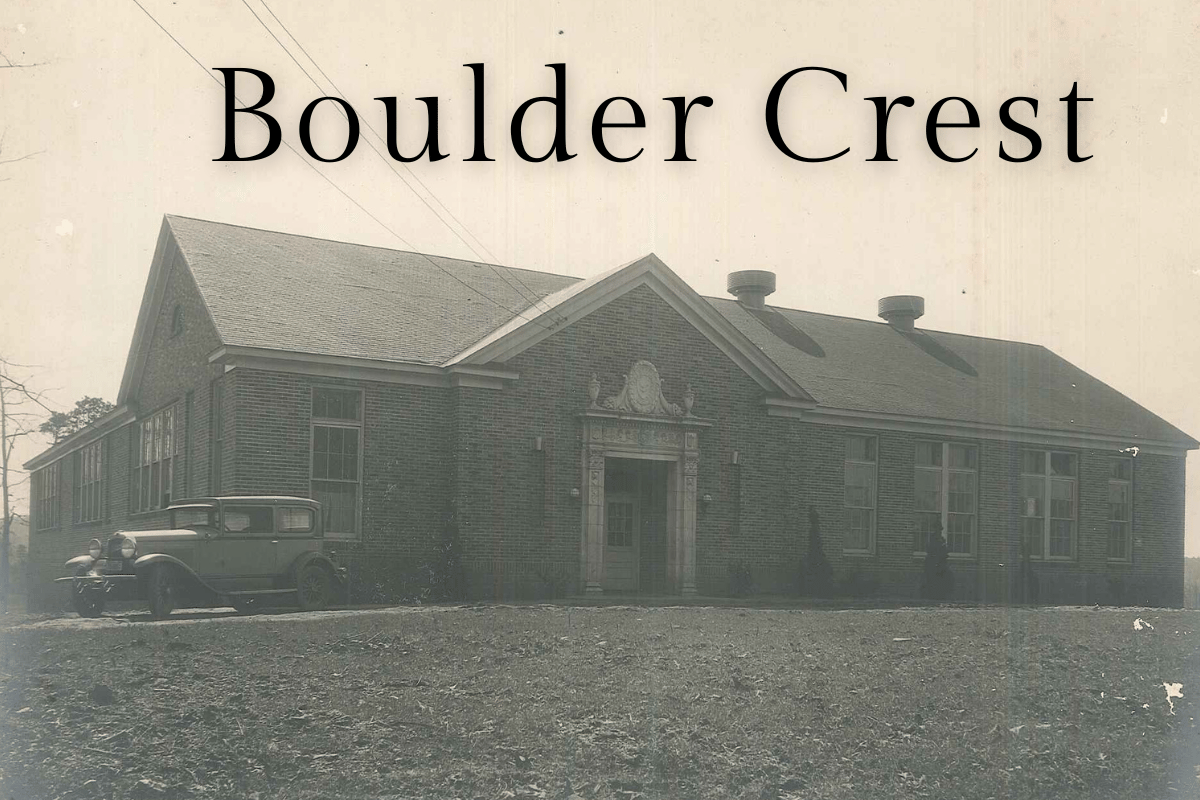History of the Annunciation Greek Orthodox Church and the Atlanta Greek Festival
Rites, Ritual, and Community: The History of the Annunciation Greek Orthodox Church and the Atlanta Greek Festival
By Maddi Speed, Archives Assistant
Learn the history of the Annunciation Greek Orthodox Church and the Atlanta Greek Festival.
If you live near North Druid Hills, chances are you’re familiar with the Atlanta Greek Festival, which has taken place every September since 1974. Even if you’ve never attended the festival itself, you’ve likely driven past the church which hosts it annually: the Annunciation Greek Orthodox Cathedral. The building is hard to miss—resplendent in its Byzantine-style architecture adorned with arches, its gold dome gleams in the afternoon sun and serves as a beacon to the community it has served for more than a century. But more than just its appearance, the cathedral is notable for its history and its importance to the Greek community in Atlanta since the early 20th century.

Greek Orthodox Church of the Annunciation on Clairmont Road. The bell in the bell tower is from the Pryor St location.
The Greek Orthodox Church of the Annunciation was founded on September 5, 1905, by a congregation of Greek immigrants who came to Atlanta at the turn of the 20th century. Greeks were just one part of a larger wave of migration pouring into the country at that time. An Atlanta Constitution article from 1902 reported on the record-breaking immigration, which brought scores of immigrants, largely from various European countries, into the US in search of a better life for their families. The article presents Greek immigrants in an unfavorable light, describing them as “undesirable” because they “prefer commercial life to productive toil” and claiming that “few of them have trades and they go to peddling or become petty merchants of some sort.” (1) Despite this, the author does acknowledge the geopolitical instability that brought Greeks to the US in the first place, specifically the strained relationship that continued to exist between Greece and Turkey despite the 1821 War of Independence that freed Greece from Ottoman rule. The article cites Greece’s “increasing fondness for America” since the 1897 Greco-Turkish War, which was fought over the status of Crete and mirrored trends in contemporary Greek nationalist political action. (2)It was in this climate that Greek immigrants came to Atlanta and founded what was then known as Our Cathedral of the Annunciation. The church first met in a rented room on the top floor of a building on Whitehall Street downtown. That location was largely transitory—it had no permanent priest, and after a year began meeting above a store in a mostly Greek neighborhood on Decatur Street. Its next location (which also housed a school) was in a converted Presbyterian church on Garnett Street and Central Avenue.

From 1928 to 1970, the parish moved to Pryor street and organized in a former synagogue whose architecture boasted the ornate Byzantine architecture that foreshadowed its next and current home on Clairmont Road. (3) Whatever its location, Annunciation has formed the center for Greek life in Atlanta since its inception. The church’s parish history website describes the importance of the church to the Greek community throughout both World Wars, the Great Depression, and major changes in Greek politics back in the home country that would have resonated with recent immigrants. (4) For example, a 1906 article from the Atlanta Journal, titled “Will Raise Funds for Oppressed Greeks,” announced the church’s relief fund “[a]s a memorial to their fellow countrymen who were victims of the Turkish massacres in Bulgaria,” showing the congregation’s concern over Greece’s continued hostile dealings with Turkey, even as they themselves were now an ocean away. (5)

From The Atlanta Journal, 1906.
Although the church website lists Clairmont Road as the church’s official location starting in 1970, the first worship service actually took place three years earlier in 1967, while construction was still underway. But the unfinished facade did nothing to dim the beauty of the church and of the service itself. An Atlanta Constitution article by Margaret Hurst described the beauty and opulence of the church’s architecture: “Byzantine splendor came to Clairmont Road Sunday as dignitaries of the Greek Orthodox Church gathered in their panoply of gold and silver brocade robes and jeweled crosses for the Anixithria (official opening) of the new Greek Orthodox Church of the Annunciation buildings.” (6) Hurst described the architecture as a “rare sight in Atlanta,” and she was right. (7) Compared to the design of its more austere neighbors in North Druid Hills, the winding cul-de-sacs, and the Ranch style homes that sit across from it, Annunciation very much stands out. When it was officially designated as a cathedral in 1972, Annunciation was only the third of its kind in Atlanta, making it seem like even more of an outlier. (8) But its unusualness only made it more of a sight to see, and more a unique symbol of the Greek Orthodox community, as when Ecumenical Patriarch Bartholomew, Orthodox Archbishop of Constantinople and New Rome, worshiped there during his 1997 visit to Atlanta as part of a larger tour of American Greek Orthodoxy. (9)

“Modified Byzantine Architecture of New Greek Orthodox Church of the Annunciation Turns Heads on Clairmont Road” From The Atlanta Constitution, 1967.
Annunciation’s first service set the tone for what the cathedral represented: a beautiful haven of Greek Orthodox community and tradition in the heart of DeKalb County. The ceremony heavily incorporated Greek culture and customs from the ancient to the modern times, including folk dances and costumes, readings of ancient poems, hymns, and a ballet based on the myth of Persephone and Hades. Moreover, Hurst mentions Annunciation’s plans to offer Greek language and culture classes in addition to Sunday school, meaning that not only would the cathedral embody Greek Orthodox tradition and history through its architecture and worship services, it would keep the traditions alive within the community as well. (10)
One of ways the church keeps its traditions alive is its annual Atlanta Greek Festival, which has been taking place every year without fail since 1974. The festival centers around food, dancing, costumes, and music—a wholesale celebration of Greek culture. The sentiment surrounding the festival is that everyone gets to be Greek for the day, and can witness and take part in the best aspects of Greek life in the city. Father George Alexson stated that the purpose of the festival “is not to convert, but to show others who we are,” focusing on a strong sense of Greek pride strengthened by the yearly continuation of traditions. (11)
Food, in particular, is an important part of that tradition, and as such, much of the event’s festivities are based around the preparation and consumption of traditional Greek dishes. Tellingly, a good portion of the article announcing the first Atlanta Greek Festival in 1974 is devoted to descriptions of all the different ways to prepare Greek staples like eggplant, feta, lemons, and olive oil, and even ends with a recipe for lamb skewers. (12) Food is also integral to the community aspect of the festival, as almost all the fare on offer is painstakingly prepared by church members themselves. Journalist Lillian Guevara-Castro interviewed church members responsible for baking pastries and sweets for the 1990 festival, and the experience seemed both rigorous—preparing food for an expected 40,000 guests—and deeply nostalgic. Kathy Galloway, in charge of the baklava (filo pastry layered with nuts and honey) learned how to make traditional Greek food from her mother and grandmother, and was more than eager to carry on their legacy. (13) The same with Jeanie Smith, who prepared Greek cinnamon cookies dipped in honey, who described the festival saying “[e]very year it brings back the same memories.” (14)

Melomakaronas, Greek cinnamon cookies dipped in honey. Picture from web. https://www.poupadou.com/blog/en/melomakarona/
Ultimately, the main purpose of the festival, and in many ways of Annunciation itself, is to celebrate the Greek community in Atlanta and to carry on the legacy of the immigrants who founded it. In a 2005 article by Erin Greer celebrating the cathedral’s centennial, Greer chatted with members of the Annunciation community and asked what the church meant to them. Elaine Tissura, whose mother immigrated from Greece in 1916, remarked, “[m]y three daughters were married here and my mother too. I hope someday my granddaughters will be married here. Our whole life is centered around this church.” Congregant Maria Sharp echoed Tissura’s sentiment, saying, “[t]he church is a community . . . It gives us a special identity both in our religious and our ethnic life.” (15) Still, the importance of Annunciation, and the deep meaning it holds to the Greek community, can best be summed up by the cathedral’s own website:
“Why was it so important for them to come together? Why not just live and work in America and let the chips fall where they may? Because they were Greeks, and to be Greek is to be intimately connected to the common ancestry from which they came . . . It meant that they could not go to a strange land and let their magnificent religious and cultural traditions slip away. Those first Greeks who came to America over 100 years ago and the early immigrants in Atlanta in 1905 joined together to keep their inheritance alive for generations to come.” (16)
Today, the children of those immigrants continue to keep their inheritance alive, both in the church and in the Greek festival. It’s an inheritance that you, too, can share in, so be sure to check the church’s calendar come the fall—you’ll be glad you did.

Greek Dancers at the Atlanta Greek Festival, c. 1993. DeKalb New Era Collection.
- “Foreigners Seeking Homes in America By Hundreds and Thousands,” Atlanta Constitution (Atlanta, GA), May 24, 1902.
- “Greco-Turkish Wars,” Britannica, accessed April 20, 2024, https://www.britannica.com/event/Greco-Turkish-wars#ref134897.
- “Parish History,” Annunciation Greek Orthodox Cathedral official website, accessed April 20, 2024, https://www.atlgoc.org/parish-history.
- Ibid.
- “Will Raise Funds for Oppressed Greeks,” Atlanta Journal (Atlanta, GA), Sept. 12, 1906.
- Margaret Hurst, “Greek Church Dedicated by Archbishop,” Atlanta Constitution (Atlanta, GA), Nov. 20, 1967.
- Ibid.
- Bill Buchanan, “Atlanta Gets 3rd Cathedral,” Atlanta Constitution (Atlanta, GA), Oct. 25, 1972.
- Gayle White, “Pomp, Pageantry, to Greet Patriarch,” Atlanta Journal (Atlanta, GA), Oct. 25, 1997.
- Hurst.
- Erin Greer, “Foundations of Faith,” DeKalb Neighbor (Decatur, GA), Sept. 21, 2005.
- Jean Thwaite, “All Day Long: Greek Women Preparing for October Festival,” Atlanta Constitution (Atlanta, GA), Sept. 19, 1974.
- Lillian Guevara-Castro, “Offerings are Sweet at Festival,” Atlanta Constitution: DeKalb Extra (Atlanta, GA), Sept. 27, 1990.
- Ibid.
- Greer.
- “Parish History.”






